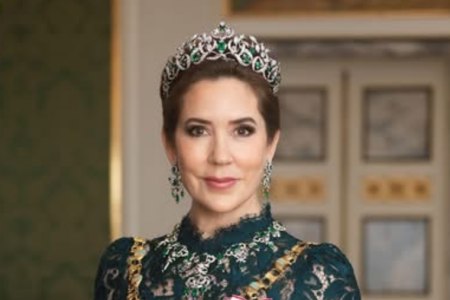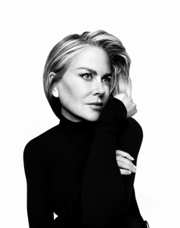What Queen Mary of Denmark Reveals in Her Candid New Documentary About Royal Life Will Surprise You
By
Gian T
- Replies 0
Queen Mary of Denmark has long captured the hearts of Australians and Danes alike, but her latest project is shining a light on a royal story that’s as fascinating as it is misunderstood. In a brand-new documentary and exhibition, Queen Mary steps into the spotlight—not just as a modern monarch, but as a storyteller, historian, and advocate for women’s rights.
**A Royal Connection Across Centuries**
The documentary, which accompanies a new exhibition at Denmark’s National Museum (Frederiksborg Castle), explores the life of Countess Danner—a woman whose journey from humble beginnings to the Danish royal family mirrors Queen Mary’s own in many ways. Like Mary, Countess Danner was born a commoner (Louise Christine Rasmussen) and rose to prominence through her marriage to King Frederik VII. But her path was anything but smooth.
Countess Danner’s story is one of resilience, controversy, and compassion. Born in 1815 to the lowest rungs of society, she became a ballet dancer and later met the future king. Their love was scandalous for the time, and their marriage was fiercely opposed by the government due to her background and the fact that she had a child out of wedlock. Despite the obstacles, they married, but Danner was never granted the title of Queen—her marriage was 'morganatic,' meaning she could not share her husband’s rank or privileges.
**Queen Mary’s Personal Tribute**
Since ascending to the throne, Queen Mary has made a point of honouring Countess Danner’s legacy. She’s been photographed at the National Museum, carefully examining artefacts from Danner’s life, and she features prominently in the new documentary film that accompanies the exhibition. In the film, Mary discusses Danner’s humble origins, her struggles with public perception, and her enduring impact on Danish society.
‘The film tells the story of one of history’s most significant female figures, and the objects help to illustrate how Countess Danner’s history as a role model and norm breaker is closely intertwined with Denmark’s history,’ the Danish royal household said in a statement.
Queen Mary also delves into the Countess’s religious beliefs, the defamatory writings that plagued her, and the way her legacy continues to spark debate even today. It’s a candid, thoughtful look at a woman who broke the mould—and paid the price for it.
**A Legacy of Compassion and Social Change**
After King Frederik VII’s death, Countess Danner used her position and fortune to champion the vulnerable, founding institutions to help women and children in need. Her legacy lives on in the Danner organisation, which supports women and children exposed to violence—a cause that Queen Mary has also made central to her royal work through the Mary Foundation.
In a moving speech at the unveiling of a four-metre bronze statue of Countess Danner in Copenhagen last year, Queen Mary said: ‘The story of Countess Danner is also the history of Denmark. A monument is a memorial, and in Countess Danner’s case, it will stand as a symbol of her importance for women’s liberation, social awareness and social mobility.’
**Royal Jewels and Symbolic Gestures**
Queen Mary’s tributes to Danner aren’t just words. At the statue unveiling, she wore a stunning brooch of citrine, amethysts, pearls, and diamonds—part of a set once owned by Countess Danner herself. These jewels, now part of the Danish Crown Jewels at Rosenborg Castle, had not been worn since Danner’s time until Mary brought them out for the occasion. She’s since worn the brooch and matching earrings at other significant events, including a state banquet in Finland, pairing them with a historic tiara not seen in public for 140 years.
**Why This Story Matters Today**
For many Australians, Queen Mary’s journey from Tasmania to the Danish throne is a source of pride and inspiration. Her willingness to embrace and share the stories of women like Countess Danner shows a deep respect for history—and a commitment to using her platform for good.
The documentary and exhibition invite us to reflect on how far society has come, and how much further we have to go in terms of equality, compassion, and understanding. It’s a reminder that the struggles of the past still echo today, and that the actions of one person—royal or not—can make a lasting difference.
**Have Your Say!**
Have you followed Queen Mary’s journey from Hobart to Copenhagen? What do you think about her efforts to highlight the stories of women like Countess Danner? Do you believe royals have a responsibility to champion social causes? We’d love to hear your thoughts—share your comments below!
And if you’re interested in learning more about the exhibition or the documentary, let us know—perhaps we can organise a virtual tour or share more behind-the-scenes details in a future article!

**A Royal Connection Across Centuries**
The documentary, which accompanies a new exhibition at Denmark’s National Museum (Frederiksborg Castle), explores the life of Countess Danner—a woman whose journey from humble beginnings to the Danish royal family mirrors Queen Mary’s own in many ways. Like Mary, Countess Danner was born a commoner (Louise Christine Rasmussen) and rose to prominence through her marriage to King Frederik VII. But her path was anything but smooth.
Countess Danner’s story is one of resilience, controversy, and compassion. Born in 1815 to the lowest rungs of society, she became a ballet dancer and later met the future king. Their love was scandalous for the time, and their marriage was fiercely opposed by the government due to her background and the fact that she had a child out of wedlock. Despite the obstacles, they married, but Danner was never granted the title of Queen—her marriage was 'morganatic,' meaning she could not share her husband’s rank or privileges.
**Queen Mary’s Personal Tribute**
Since ascending to the throne, Queen Mary has made a point of honouring Countess Danner’s legacy. She’s been photographed at the National Museum, carefully examining artefacts from Danner’s life, and she features prominently in the new documentary film that accompanies the exhibition. In the film, Mary discusses Danner’s humble origins, her struggles with public perception, and her enduring impact on Danish society.
‘The film tells the story of one of history’s most significant female figures, and the objects help to illustrate how Countess Danner’s history as a role model and norm breaker is closely intertwined with Denmark’s history,’ the Danish royal household said in a statement.
Queen Mary also delves into the Countess’s religious beliefs, the defamatory writings that plagued her, and the way her legacy continues to spark debate even today. It’s a candid, thoughtful look at a woman who broke the mould—and paid the price for it.
**A Legacy of Compassion and Social Change**
After King Frederik VII’s death, Countess Danner used her position and fortune to champion the vulnerable, founding institutions to help women and children in need. Her legacy lives on in the Danner organisation, which supports women and children exposed to violence—a cause that Queen Mary has also made central to her royal work through the Mary Foundation.
In a moving speech at the unveiling of a four-metre bronze statue of Countess Danner in Copenhagen last year, Queen Mary said: ‘The story of Countess Danner is also the history of Denmark. A monument is a memorial, and in Countess Danner’s case, it will stand as a symbol of her importance for women’s liberation, social awareness and social mobility.’
**Royal Jewels and Symbolic Gestures**
Queen Mary’s tributes to Danner aren’t just words. At the statue unveiling, she wore a stunning brooch of citrine, amethysts, pearls, and diamonds—part of a set once owned by Countess Danner herself. These jewels, now part of the Danish Crown Jewels at Rosenborg Castle, had not been worn since Danner’s time until Mary brought them out for the occasion. She’s since worn the brooch and matching earrings at other significant events, including a state banquet in Finland, pairing them with a historic tiara not seen in public for 140 years.
**Why This Story Matters Today**
For many Australians, Queen Mary’s journey from Tasmania to the Danish throne is a source of pride and inspiration. Her willingness to embrace and share the stories of women like Countess Danner shows a deep respect for history—and a commitment to using her platform for good.
The documentary and exhibition invite us to reflect on how far society has come, and how much further we have to go in terms of equality, compassion, and understanding. It’s a reminder that the struggles of the past still echo today, and that the actions of one person—royal or not—can make a lasting difference.
**Have Your Say!**
Have you followed Queen Mary’s journey from Hobart to Copenhagen? What do you think about her efforts to highlight the stories of women like Countess Danner? Do you believe royals have a responsibility to champion social causes? We’d love to hear your thoughts—share your comments below!
And if you’re interested in learning more about the exhibition or the documentary, let us know—perhaps we can organise a virtual tour or share more behind-the-scenes details in a future article!
Key Takeaways
- Queen Mary of Denmark has participated in a new documentary film about Countess Danner, a misunderstood royal who rose from humble beginnings to marry King Frederik VII.
- Queen Mary was photographed visiting Denmark’s National Museum at Frederiksborg Castle ahead of a major exhibition about Countess Danner, viewing artefacts linked to her life and legacy.
- The documentary and exhibition highlight Countess Danner’s challenging life, her controversial marriage, charitable works for vulnerable women and children, and her enduring influence on women’s rights in Denmark—an issue Queen Mary also champions.
- Queen Mary has worn historical jewels once owned by Countess Danner at significant events, symbolising her tribute to the countess and their shared focus on social causes.








